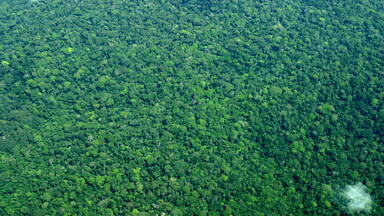The World Heritage Committee,
- Having examined Document WHC/19/43.COM/7B.Add,
- Recalling Decisions 38 COM 7B.86, 40 COM 7B.79, 41 COM 7B.18 and 42 COM 7B.90, adopted at its 38th (Doha, 2014), 40th (Istanbul/UNESCO, 2016), 41st (Krakow, 2017) and 42nd (Manama, 2018) sessions respectively;
- Expresses its utmost concern that the 2018 wildlife survey results demonstrate a worrying decline in the population of key large mammals including elephant, gorilla and chimpanzee and that poaching is prevalent across the property and requests the State Party to transmit data from the inventory to the World Heritage Centre to enable an assessment of the conservation status of these key populations;
- Welcomes the ongoing efforts undertaken by the State Party to improve law enforcement, notably capacity building sessions for guards, the acquisition of monitoring and surveillance equipment, the implementation of the Spatial Monitoring and Reporting Tool (SMART), and progress towards the revision of legislation and national anti-poaching strategy;
- Urges the State Party to further enhance its monitoring and surveillance efforts in the key conservation sectors where wildlife is still present, to ensure that arrests of apprehended poachers and wildlife traffickers are leading to convictions where warranted and to raise awareness among local communities to stop the consumption and trade of bush meat;
- Notes with concern the conclusions of the UNESCO Advisory mission that the Environmental and Social Impact Assessments (ESIA) for the Sud-Cameroon Hévéa S.A. (SUDCAM) rubber plantation project, which borders the property, does not meet the required World Heritage standards but also welcomes the decision by the new majority shareholder (Halcyon) to immediately stop all clearing and felling operations in the plantation and to adopt responsible entrepreneurship standards for the rubber sector with independent certification of the production;
- Also urges the State Party to implement all the recommendations from the Advisory mission, in particular to:
- Create a buffer zone around the property, in which only those activities compatible with the conservation of its Outstanding Universal Value (OUV) are permitted,
- Classify the portion of the concession returned by SUDCAM in the permanent forest estate of the State while authorizing sustainable use regimes,
- Refrain from future extensions of the latex processing plant in the SUDCAM central block and consider sites better positioned in terms of infrastructure while taking into account the environmental and social aspects, including for the existing plant;
- Also takes note of the activities undertaken to continue the implementation of the Environmental and Social Management Plan (PGES) and the relocation of local communities due to the impacts of the Mékin dam, and also requests the State Party to submit further information regarding the location of the proposed 11 bridges and any other proposed infrastructure, as well as the intention to declassify 1,000 ha of the communal forest of Bengbis;
- Noting efforts towards limiting the negative social impacts of the Mékin hydroelectric dam on the local communities, expresses its concern that no progress appears to be made in addressing the environmental impacts and further requests that additional Environmental Impact Assessments (EIA) are conducted to identify how to better mitigate the impacts of this project on the OUV of the property;
- Further urges the State Party to not accept any new project within the vicinity of the property that could aggravate the existing threats and compromise the progress achieved in the management of the property, and ensure that any project is subject to a mandatory ESIA prior to approval, including a specific evaluation of potential impacts on the OUV of the property, in conformity with the IUCN World Heritage Advice Note on Environmental Assessment and in accordance with Paragraph 172 of the Operational Guidelines;
- Notes the importance of maintaining continued connectivity to the other protected areas of the Tri-national Dja-Odzala-Minkébé landscape (TRIDOM) in order to ensure the long term integrity of property, and further requests the State Party to consider this broader landscape when planning new development projects around the property, especially road infrastructure;
- Finally requests the State Party to submit to the World Heritage Centre, by 1 December 2020, an updated report on the state of conservation of the property and the implementation of the above, for examination by the World Heritage Committee at its 45th session in 2021.
